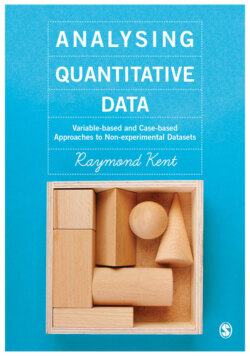Читать книгу Analysing Quantitative Data - Raymond A Kent - Страница 25
На сайте Литреса книга снята с продажи.
Chapter summary
ОглавлениеThis chapter has shown that data are a deliberate and thoughtful construction by researchers or other individuals rather than simply ‘collected’ and they result from a process of systematic record-keeping. Records are created in a social, economic and political context and for purposes specific to individuals within organizations. Data may be qualitative or quantitative; the former consist of words, phrases, narrative, text and visual images, while quantitative data arise as numbers that result from the systematic capture of classified, ordered, ranked, counted or calibrated characteristics of a specified set of cases. All quantitative data have a structure that consists of cases, properties and values. Cases are the entities under investigation in a particular piece of research. The number used in any particular analysis will be known and will relate either to the population of cases or to some subset of them. In some research projects, there may be more than one set of cases, sometimes arranged hierarchically as sets within sets, or sets at different points of time. Properties are the characteristics of cases that the researcher has chosen to observe or measure and then record. They may be demographic, behavioural or cognitive and they may play one or more roles in a research project as descriptors, causes or effects. Values are what researchers actually record as a result of the process of assessing properties. Such records may relate either to variables or to set memberships. The values of variables assess cases relative to one another; sets define memberships or degrees of membership in absolute terms according to generally agreed external standards or based on a combination of theoretical knowledge and practical experience of cases.
The values of variables may be recorded into different types of measure which have in this text been classified into binary, nominal, ordered category, ranked, discrete metric and continuous metric. Properties that relate to set memberships may be crisp or fuzzy. The distinction between types of measure is not always clear-cut and may be open to interpretation. The creation of measures, furthermore, is subject to many kinds of error in data construction. Errors can often be reduced by devoting extra resources to their minimization, but usually at extra cost in time and money.
